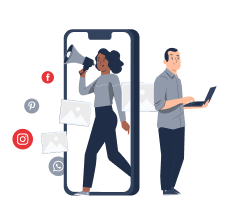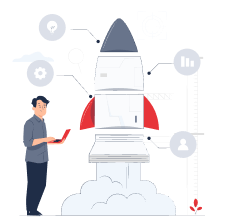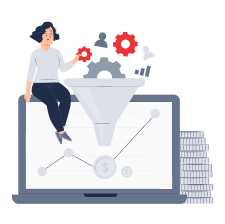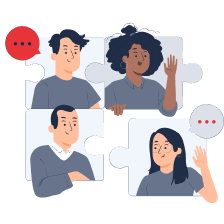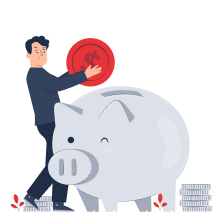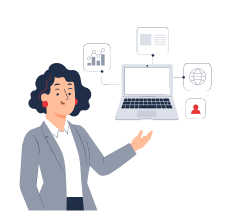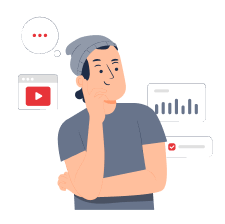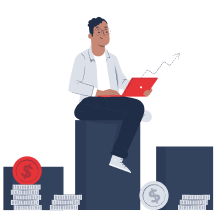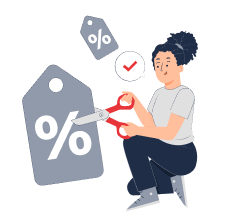Customer Lifetime Value (CLV)
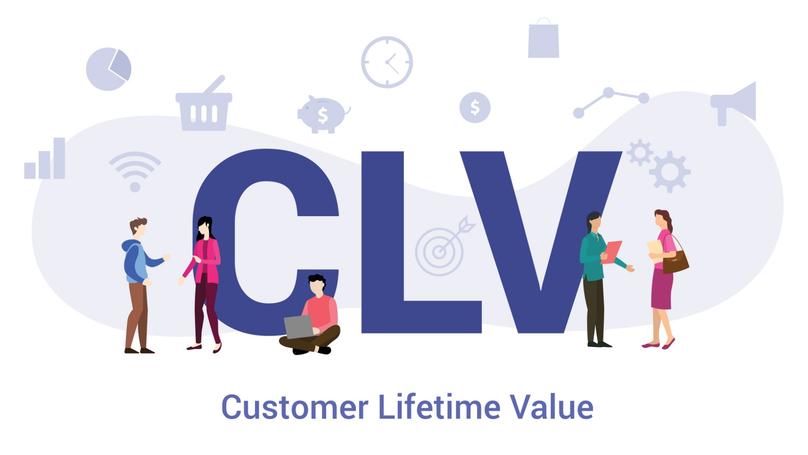
Introduction
Success in today's competitive business environment is no longer just about making sales and gaining new customers. What really matters now is understanding the long-term value each customer brings to your business. So, how do you encourage customers to stay with you for the long term? And how can you increase profits by focusing on your existing customers? The answer lies in a crucial metric: Customer Lifetime Value (CLV).
This article serves as your guide to CLV. We will examine why this metric is crucial for any business, regardless of its size or industry sector. We'll take a closer look at how CLV is calculated, examine the key factors that affect it, and discuss strategies to increase it. You'll discover how CLV can help you make informed decisions in marketing, sales, and finance, as well as how to avoid common pitfalls when measuring it. We'll show you how CLV ties in with customer acquisition cost (CAC) and how to use this ratio to drive sustainable growth.
What is Customer Lifetime Value (CLV)?
Customer Lifetime Value (CLV) is the likely net profit a business can make from a single customer over the entire length of their relationship. In other words, it's the total revenue a customer is predicted to generate, minus the overall costs of serving them, from their initial interaction to their final one.
Understanding Customer Lifetime Value provides an insight into the overall value a customer brings to your business, their potential and long-term impact on profitability. With this knowledge, companies can allocate resources more effectively, identify high-value customers, and focus on building lasting relationships. The outcome? Increased profits and long-term sustainability. That's why CLV is such a crucial metric for businesses across all industries.
It's essential to remember that Customer Lifetime Value is a predictive metric. It uses historical data and past interactions to make informed predictions about future customer behaviour. A high CLV, whether for an individual customer or a customer segment, indicates that the customer is not only highly profitable but also likely to remain loyal to the brand. This understanding allows companies to:
-
Enhance products and services using feedback from loyal customers. Customers with a high Customer Lifetime Value (CLV) are often more likely to share their thoughts on products and services, enabling the company to continually refine its offerings and tailor them to customer needs.
-
Grow and scale sustainably. A high CLV is the key to lasting growth. When customers generate more profit, a company can afford to expand its operations, open new branches, launch new products, and enter new markets.
-
Boost the return on investment (ROI) in marketing and sales. CLV enables you to gauge the effectiveness of marketing campaigns and sales efforts. If CLV exceeds the cost of acquiring and servicing customers, then investments in these areas are profitable. The same applies in reverse.
CLV is a widely applicable metric across various industries, including e-commerce, SaaS (Software as a Service), finance, and retail.
Why CLV is important for your business
One of the key aspects of CLV is the difference between the cost of acquiring a new customer and the expense of keeping an existing one. Naturally, it's much more cost-effective to keep existing customers than to attract new ones. Acquiring a new customer often requires considerable investment in advertising, salaries for sales teams, and incentives, all of which add up fast. In contrast, retaining customers requires fewer resources, relying on strategies such as loyalty programmes, personalised email newsletters, and excellent customer service.
As a result, keeping existing customers generally costs 5 to 7 times less than acquiring new ones, i.e. Customer Acquisition Cost (CAC). Knowing Customer Lifetime Value (CLV) can revolutionise your approach to business. It helps you accurately evaluate the effectiveness of marketing campaigns, including calculating marketing ROI.
For example, if you run an advertising campaign without knowing Customer Lifetime Value (CLV), you might measure its success solely by the number of leads or immediate sales. However, knowing the CLV of customers gained through the campaign allows you to examine their long-term value to your business. In other words, was the investment truly worthwhile? Through integrating CLV into your decision-making, you can maximise your profits and the efficiency of your marketing strategies.
CLV is a valuable tool for segmenting customers, helping you identify your most valuable ones, your VIPs. You can reward them with exclusive benefits, such as special discounts, early access to new products, dedicated support, and other perks. Mid-level customers can be engaged with personalised recommendations, targeted discounts on products that match their interests, and incentives to encourage repeat purchases. For those with lower customer lifetime value (CLV), more aggressive marketing strategies that boost engagement tend to be more effective.
How to calculate Customer Lifetime Value

If you're wondering how to calculate CLV, there are two method options available. The simplest procedure is as follows:
CLV (formula) = Average Order Value (AOV) x Purchase Frequency x Customer Lifetime
Let us examine the elements of the formula in detail:
-
Average order value (AOV) represents the average amount a customer spends on each purchase. To calculate the average order value (AOV), divide the total revenue for a particular period by the total number of orders within that timeframe. For example, if your shop made $100,000 in a month from 100 orders, the AOV would be $1,000.
-
Buying frequency measures the frequency of customer purchases within a specific timeframe, typically a year. To calculate it, divide the total number of purchases in that period by the total number of customers. For example, if 1,000 customers made 5,000 purchases over the course of a year, the Purchase Frequency would be 5.
-
Customer lifetime denotes how long a customer stays loyal. This can range from a few months to several years, or even decades. Calculating Customer Lifetime accurately is challenging, as various factors, including the quality of the product or service, customer service standards, brand loyalty, and more, influence it.
There's also an extended formula that provides a more accurate understanding of customer value by taking into account gross profit. This helps enhance customer value more realistically:
CLV = (Average Order Value x Buying Frequency x Customer Lifetime) x Gross Profit
Or:
CLV = (AOV x Purchase Frequency x Customer Lifetime) * Gross Margin
Here, gross profit is the difference between revenue and the cost of goods sold (COGS). This indicator shows the profit a company makes from each sale, after deducting the costs of producing or buying a product or service. Gross margin is essentially the same as gross profit, just articulated as a percentage of revenue.
Sample calculations with explanation
Let's consider an example to see how CLV is calculated in practice.
Example 1: Coffee shop
Imagine you own a coffee shop. Now, let's calculate the CLV for a single customer using the advanced method that includes gross margin:
-
AOV: ¥500: the average amount spent by a customer per visit.
-
Purchase Frequency: twice a week, which amounts to approximately 104 times a year (52 weeks x 2).
-
Customer Lifetime: 2 years: the average length a customer continues to visit your coffee shop.
-
Gross Margin: 60% (0.6): the amount of profit from each sale, once the cost of ingredients and other direct expenses have been deducted.
CLV = (500 x 104 x 2) * 0.6 = 62,400 yen
This suggests that the average coffee shop customer generates a profit of 62,400 yen throughout their relationship with your business.
Note: These examples demonstrate basic calculations. In real-world scenarios, factors such as customer acquisition costs, marketing expenses, service costs, and others must be considered. Nevertheless, the same principles also apply to B2B CLV.
Fortunately, modern technology has significantly streamlined the calculation and observation of CLV. Many tools and software solutions now automate this process, offering more accurate and current insights. Examples include CRM systems such as HubSpot, Salesforce, and Bitrix24, as well as eCommerce analytics platforms and specialist software like Custora, Woopra, and Optimove.
Key metrics that influence CLV
As previously mentioned, CLV should always be considered in conjunction with other factors and gauges. Therefore, it may be influenced by:
- Average Order Value (AOV) - represents the average amount a customer spends per purchase and plays a vital role in determining CLV. A higher AOV results in increased profit per transaction, ultimately enhancing CLV.
- Purchase frequency - refers to the total number of purchases a customer makes within a specific timeframe, usually a year. This metric plays a crucial role in determining Customer Lifetime Value; a higher purchase frequency typically leads to a higher CLV.
- Churn rate - is the percentage of customers who stop using your products or services within a specific timeframe. As a negative metric, it directly affects CLV; higher churn rates result in a lower CLV.
- Customer Lifetime - is the average length of time a customer remains a customer. The longer they use your products or services, the higher their CLV is.
- Gross Profit / Gross Margin - is the difference between revenue and the cost of goods sold (COGS). Gross margin is shown as a percentage of revenue. This indicator directly impacts the profitability of each sale and, consequently, CLV.
Every aspect of business is interconnected, so mastering and refining these essential metrics will enhance your CLV, ultimately driving increased profitability for your company.
How to increase Customer Lifetime Value
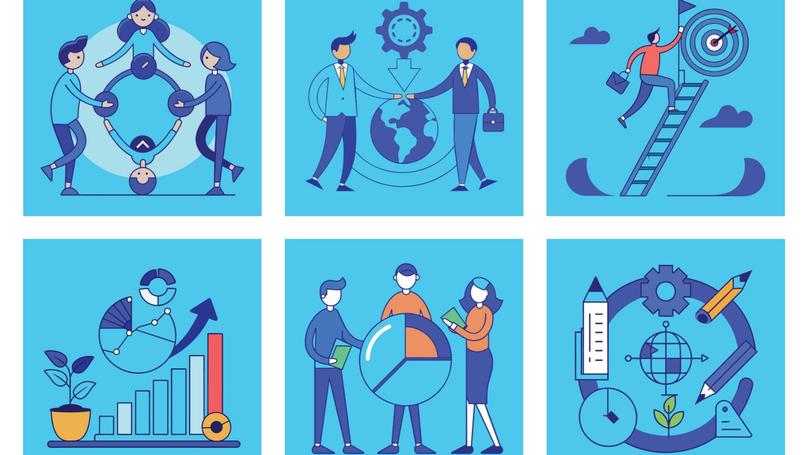
Calculating CLV is just the beginning, and it's only half the story! The real focus is on increasing CLV, as a higher value means customers are more valuable to the company. Fortunately, there are several strategies and approaches to improve CLV effectively.
Personalisation
It concerns tailoring customer interactions to their individual needs, preferences, and behaviours. This involves creating unique experiences for each person, based on customer segmentation. To make this happen, group your customers into distinct categories according to their behaviour, demographics, purchase history, preferences, and other key traits. By doing this, you gain a deeper understanding of each group's needs, allowing you to tailor your marketing strategies and launch the following things effectively:
-
Dynamic website content: utilise customer data to present personalised content on your website. This could encompass product recommendations, special offers, banners, and other touches that resonate with their interests.
-
Personalised recommendations: which incorporate your customers' purchase data, browsing history, and preferences to provide them with products and services that genuinely interest them.
-
Personalised email marketing: send relevant emails to customers based on their interests. For instance, if a customer recently purchased two tubs of paint, they may find it interesting and useful to learn how to mix and dilute it, among other things. Alternatively, offer them a solvent to purchase.
-
Personalised push notifications: remind customers to complete their purchases by reminding them to check out items they've added to their basket but haven't yet bought.
Take Netflix, for instance, a major global brand that focuses on personalisation. Through using algorithms, it recommends films and TV shows that users are likely to enjoy, as the algorithms consider their viewing habits and create a "Similar" category. This increases user engagement and time spent on the website, as users are more inclined to start watching the next suggested film immediately after finishing the previous one, knowing it will be similar and therefore likely to be interesting.
Loyalty and rewards programmes
Customer loyalty programmes play a crucial role in retaining customers, encouraging repeat purchases, and increasing CLV. By creating a sense of recognition and appreciation, they reinforce brand loyalty and prolong the average customer lifespan. Here are some effective strategies:
-
Offer rewards for purchases, actions (such as registration and reviews) and achieving specific targets.
-
Segment customers into tiers based on their engagement and offer each loyalty tier exclusive benefits reflective of the value they contribute to your business. For instance, the higher the loyalty tier, the greater the discount on your products.
-
Provide discounts on future purchases, complimentary delivery, gifts, and other rewards for registered users, as well as those with a high volume of purchases, segmented into groups.
-
Give loyalty members early access to new products, services, and exclusive events.
-
Enhance the loyalty program by incorporating gamification elements to improve engagement. For example, implement a mini-game in the app that customers can play while waiting for their order, similar to the Wolt food delivery app.
Starbucks Rewards is another fantastic example of a loyalty programme. Customers earn stars for every purchase, which can be exchanged for free drinks, food, and other perks.
Exceptional customer service
Outstanding customer service plays a vital role in maintaining customer loyalty and encouraging repeat business. When people are satisfied with the service they receive, they're much more likely to continue choosing your products or services. Providing excellent service means:
-
Timely responses are essential. Focus on customer enquiries promptly to show that you value their time and prioritise their needs.
-
Effective problem-solving is key. Resolve customer issues promptly and efficiently. Keep in mind that a happy customer will tell three people about good service, whereas an unhappy customer will tell eleven.
-
Personalised support. Treat each customer as an individual. Remember that personalisation is the key to building loyal relationships.
-
Staff training. Make sure your customer-facing staff are properly trained and prepared. They should be knowledgeable about your products and services and have strong communication and problem-solving skills.
-
Gathering feedback. It will help you enhance your customer service and also provide valuable insights for further improvements.
-
Multi-channelling. Enable customer contact via phone, email, chat, social media, etc.
Upselling and cross-selling techniques
Upselling and cross-selling are valuable strategies to increase the Average Order Value (AOV) and, in turn, CLV.
Upselling involves offering customers more expensive versions of products or services. For example, it involves providing a customer who buys a basic version of software with an upgrade to a more advanced version that includes additional features. The goal is to convince the customer to purchase a more expensive version of the same product.
Upselling involves persuading customers to consider more expensive versions of a product or service. For example, a customer buying basic software might be offered an upgrade with extra features, with the aim of convincing them to purchase a more premium version of the same product. When cross-selling, suggest products or services that complement the customer's primary purchase. For example, if someone buys a camera, recommend accessories such as a memory card, tripod, or carrying case. The goal is to offer complementary items that enhance the value of the main purchase.
For instance, Amazon excels at combining upselling and cross-selling. On product pages, they suggest "Other products you might be interested in" alongside "Frequently bought together" recommendations (cross-selling). For example, when buying a Kindle, they promote accessories like cases and chargers, a classic example of upselling.
Common mistakes when measuring CLV
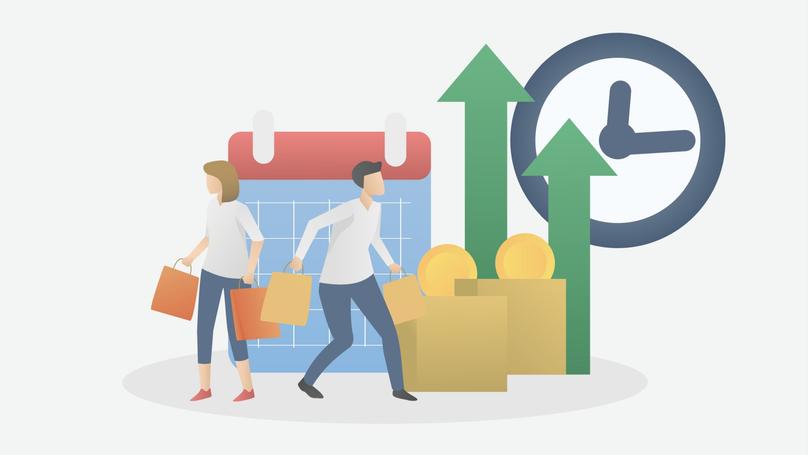
One of the most common mistakes when measuring CLV is relying on assumptions rather than actual data, which can lead to incorrect calculations, flawed conclusions, and ineffective marketing strategies that may result in lost profits. To ensure accuracy, base your calculations on real sales figures, customer interactions, and key metrics. Through examining past purchases, average order value, buying frequency, and customer life cycle, as well as other metrics, you can gain a clearer and more precise picture.
Keep in mind that CLV varies across customer segments. Frequent shoppers who spend more and remain loyal for longer typically have a higher CLV than those who make occasional purchases.
Regularly review and update your data, as CLV is a dynamic metric that changes over time. Constantly refining your calculations and examining changes in your business is crucial, as it enables you to make more informed decisions and adapt your strategy accordingly. Additionally, consider external factors such as seasonality, economic shifts, and competition, which can all impact CLV.
Additionally, the following mistakes pose a serious risk:
-
Overlooking customer churn. Customer churn has a significant impact on CLV, and disregarding it may lead to an exaggerated estimation of your customers' value and wasteful resource allocation. Incorporate churn rate in your calculations and utilise churn data to devise strategies focused on customer retention, such as loyalty programmes, enhanced customer service, personalised offers, and more.
-
Failing to segment your customers and ignoring their differences when calculating CLV can be incredibly damaging. Every customer is unique, and their value to your business will vary considerably. If you treat all customers the same, you risk missing out on valuable opportunities to increase profits or even keep customers. In essence, different segments lead to different CLV, which means you need individualised marketing strategies. This approach will also save numerous resources, as you can eliminate certain tools for engaging and attracting specific groups.
CLV vs. Customer Acquisition Cost (CAC)
To think that CLV and CAC are opposites would be wrong. These two indicators work together and are often measured together. Consequently, CAC signifies the cost of acquiring a new consumer, while CLV denotes the expected profit from that customer over the entire duration of the partnership. One of the most central measures of your business's effectiveness is the ratio between these two indicators. It demonstrates how effectively you're investing in attracting customers and how quickly these investments yield returns. A high CLV:CAC ratio indicates a strong business model, where customers generate significant profits that outweigh their acquisition costs. This suggests that your marketing and sales strategies are effective, and the business has potential for future growth.
For an ideal scenario, CLV should be several times higher than CAC, and a ratio of 3:1 or higher is often recommended. This means you'll not only recover the costs of acquiring customers but also make a substantial profit from each transaction. When CAC exceeds CLV, or they're roughly the same, it's a cause for concern. It's essential to review your marketing strategy, evaluate customer acquisition channels, and potentially adjust your business model. By understanding and utilising this metric effectively, you can make informed decisions about budget allocation, scaling plans, and building a profitable, sustainable business.
CLV business applications
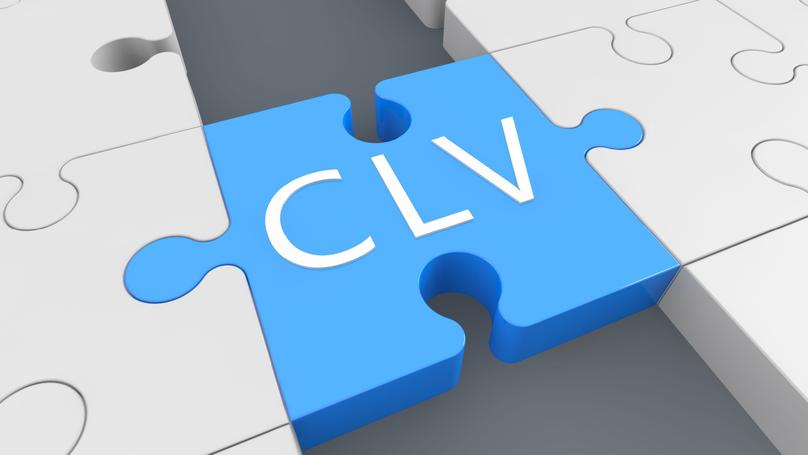
CLV is more than just a figure because it's a valuable tool that helps businesses make informed decisions about budgeting and resource allocation. This allows them to make the most of their investments, improve efficiency, and increase profits, for example:
-
Marketing budgets: Identify the channels and campaigns that attract high CLV customers and focus resources on them. If you find that customers acquired through social media have a higher CLV than those from other channels, you may want to increase your social media ad spend.
-
Customer service resources: Allocate more resources to supporting high CLV customers to enhance their experience and retain them. You can appoint a dedicated manager to assist VIP customers with high CLV, ensuring they receive superior service.
-
Priorities: Focus investments on various business areas. If you notice that investing in product improvements leads to a rise in CLV, you can divert more resources to product development.
-
Cost optimisation: Identify areas where you can reduce costs without impacting CLV. You can streamline procedures to lower the cost of serving customers without sacrificing service quality.
CLV enables you to organise customers based on their value and create targeted marketing campaigns for specific groups, such as:
-
VIP customers: Focus on high CLV customers with exclusive deals and services. As mentioned earlier, you could offer VIP customers early access to new products, special discounts, free delivery, and other benefits.
-
Lost customers: Develop strategies to win back low CLV customers who have churned. For instance, you could offer them exclusive discounts or incentives to encourage repeat purchases.
-
New customers: Identify your ideal customer profile and utilise it to target new customers. You can use information about high CLV customers to direct advertisements on social media and other channels.
CLV also helps enhance pricing policies, which impact profitability and customer loyalty. For instance, you can set premium prices for customers with a high CLV.
Conclusion
Customer Lifetime Value (CLV) is a vital metric for measuring the long-term profitability of each customer. More than just a financial figure, it acts as a strategic tool that allows businesses to make informed decisions, allocate resources efficiently, enhance productivity, and foster sustainable, profitable business growth.
Understanding CLV enables you to estimate the profit each customer will generate throughout your relationship. It acts as a crucial input for decision-making across the business, from marketing strategy and budget planning to informed pricing decisions. Don't hesitate to calculate and implement CLV: begin by gathering relevant data, calculating your customers' CLV, and examining the insights. Subsequently, select the tools and strategies that increase client value and drive even higher business profits.









